-
 Bitcoin
Bitcoin $104,092.7082
-3.90% -
 Ethereum
Ethereum $2,500.1510
-9.45% -
 Tether USDt
Tether USDt $1.0003
0.02% -
 XRP
XRP $2.1161
-5.92% -
 BNB
BNB $644.7652
-3.34% -
 Solana
Solana $143.3632
-10.62% -
 USDC
USDC $0.9995
-0.03% -
 Dogecoin
Dogecoin $0.1728
-9.80% -
 TRON
TRON $0.2700
-2.70% -
 Cardano
Cardano $0.6282
-9.47% -
 Hyperliquid
Hyperliquid $38.5896
-7.04% -
 Sui
Sui $2.9976
-10.50% -
 Chainlink
Chainlink $13.0865
-10.97% -
 UNUS SED LEO
UNUS SED LEO $8.8697
1.35% -
 Stellar
Stellar $0.2563
-7.44% -
 Bitcoin Cash
Bitcoin Cash $401.8213
-6.21% -
 Avalanche
Avalanche $18.8844
-11.63% -
 Toncoin
Toncoin $2.9457
-8.46% -
 Shiba Inu
Shiba Inu $0.0...01163
-9.64% -
 Hedera
Hedera $0.1538
-10.65% -
 Litecoin
Litecoin $82.4785
-9.46% -
 Polkadot
Polkadot $3.7430
-9.96% -
 Ethena USDe
Ethena USDe $1.0004
-0.01% -
 Monero
Monero $306.8529
-6.55% -
 Dai
Dai $0.9998
0.01% -
 Bitget Token
Bitget Token $4.4842
-5.28% -
 Pepe
Pepe $0.0...01069
-13.19% -
 Uniswap
Uniswap $7.0207
-13.47% -
 Pi
Pi $0.5498
-13.03% -
 Aave
Aave $268.2967
-9.88%
How to analyze K-line patterns and trading volume?
Analyzing K-line patterns and trading volume is key to understanding crypto market trends and making informed trading decisions, enhancing prediction accuracy.
Jun 09, 2025 at 07:29 pm

Analyzing K-line patterns and trading volume is crucial for understanding market trends and making informed trading decisions in the cryptocurrency market. K-line patterns, also known as candlestick patterns, provide visual insights into the price movements of a cryptocurrency over a specific period. Trading volume, on the other hand, indicates the total number of shares or contracts traded within a given timeframe, offering clues about the strength of a price move. This article will delve into the methodologies for analyzing these two critical aspects, helping traders to better interpret market dynamics.
Understanding K-Line Patterns
K-line patterns are graphical representations of price movements within a specified time frame, typically ranging from minutes to days. Each K-line consists of a body and wicks (or shadows), which indicate the opening, closing, high, and low prices. There are numerous K-line patterns that traders use to predict future price movements.
Bullish Patterns: These patterns suggest that the price is likely to rise. Common bullish patterns include the Hammer, Bullish Engulfing, and Morning Star. For instance, a Hammer pattern forms when the price drops significantly during the period but rebounds to close near the opening price, indicating potential bullish reversal.
Bearish Patterns: These indicate that the price may fall. Examples include the Shooting Star, Bearish Engulfing, and Evening Star. A Shooting Star appears when the price opens, rises significantly during the period, but then falls to close near the opening price, signaling a potential bearish reversal.
Continuation Patterns: These suggest that the current trend will continue. Patterns like the Doji and Spinning Top indicate market indecision and can precede a continuation of the existing trend.
To effectively analyze K-line patterns, traders must consider the context in which they appear. For example, a Bullish Engulfing pattern is more significant if it occurs after a prolonged downtrend, as it suggests a strong reversal signal.
Analyzing Trading Volume
Trading volume is a key indicator of market activity and liquidity. High trading volume often accompanies significant price movements, indicating strong interest from traders. Conversely, low volume may suggest a lack of conviction in the price move.
Volume and Price Correlation: A rise in price accompanied by high volume is generally seen as a bullish sign, indicating strong buying interest. Conversely, a price decline with high volume can signal strong selling pressure.
Volume Spikes: Sudden increases in volume can indicate significant events or news affecting the cryptocurrency. For instance, a volume spike during a price breakout can confirm the strength of the breakout.
Volume Trends: Analyzing volume trends over time can help traders identify the overall market sentiment. A consistent increase in volume during an uptrend suggests growing bullish momentum, while a decrease in volume during a downtrend may indicate weakening bearish pressure.
Combining K-Line Patterns and Trading Volume
To enhance the accuracy of market analysis, traders often combine K-line patterns with trading volume. This approach provides a more comprehensive view of market dynamics.
Confirmation of Patterns: A K-line pattern's reliability increases when it is accompanied by corresponding volume. For example, a Bullish Engulfing pattern with high volume provides stronger evidence of a bullish reversal than the same pattern with low volume.
Divergence Analysis: Traders can also look for divergences between price and volume. For instance, if a cryptocurrency's price is rising but the volume is declining, it may indicate that the uptrend is losing steam and a reversal could be imminent.
Volume at Key Levels: Observing volume at key support and resistance levels can provide insights into potential breakouts or breakdowns. High volume at these levels can confirm the significance of the price move.
Practical Steps for Analysis
To effectively analyze K-line patterns and trading volume, follow these practical steps:
Choose a Timeframe: Select an appropriate timeframe for your analysis based on your trading strategy. Short-term traders might focus on 1-minute to 1-hour charts, while long-term investors may prefer daily or weekly charts.
Identify K-Line Patterns: Scan the chart for recognizable patterns. Use tools and indicators available on trading platforms to highlight these patterns automatically.
Analyze Volume: Look at the volume bars or histograms on your chart. Compare the current volume to historical averages to gauge its significance.
Combine Insights: Cross-reference the identified K-line patterns with the corresponding volume levels. Look for confirmations or divergences that can strengthen your analysis.
Backtest and Validate: Use historical data to backtest your analysis. This can help you refine your approach and increase the reliability of your predictions.
Tools and Resources for Analysis
Several tools and resources can aid in the analysis of K-line patterns and trading volume:
Trading Platforms: Platforms like Binance, Coinbase, and TradingView offer advanced charting tools that include K-line pattern recognition and volume indicators.
Technical Analysis Software: Software such as MetaTrader and NinjaTrader provides comprehensive tools for analyzing K-line patterns and volume, including customizable indicators and automated trading capabilities.
Educational Resources: Websites, books, and courses on technical analysis can deepen your understanding of K-line patterns and trading volume. Resources like Investopedia, Trading Academy, and specific cryptocurrency analysis courses are valuable.
Common Pitfalls to Avoid
While analyzing K-line patterns and trading volume can provide valuable insights, traders should be aware of common pitfalls:
Overreliance on Patterns: Relying solely on K-line patterns without considering other factors like market news, fundamentals, and broader market trends can lead to inaccurate predictions.
Ignoring Volume: Failing to consider trading volume can result in misinterpreting the strength of a price move. Always analyze volume in conjunction with K-line patterns.
Confirmation Bias: Traders often see what they want to see. To avoid this, maintain objectivity and consider multiple scenarios before making a trading decision.
Frequently Asked Questions
Q: Can K-line patterns be used for all cryptocurrencies?
A: Yes, K-line patterns can be applied to any cryptocurrency that has sufficient trading data. However, the effectiveness of these patterns may vary depending on the liquidity and volatility of the specific cryptocurrency.
Q: How important is the timeframe when analyzing K-line patterns and volume?
A: The timeframe is crucial as it affects the granularity of the data. Short-term traders may focus on shorter timeframes to capture quick price movements, while long-term investors might look at longer timeframes to identify broader trends.
Q: Are there any automated tools that can help with K-line pattern and volume analysis?
A: Yes, many trading platforms and technical analysis software offer automated tools that can identify K-line patterns and highlight significant volume changes. Tools like TradingView and MetaTrader are particularly useful for this purpose.
Q: How can I improve my skills in analyzing K-line patterns and trading volume?
A: Improving your skills requires practice and continuous learning. Use demo accounts to practice your analysis without risking real money, and stay updated with educational resources and market news to enhance your understanding of market dynamics.
Disclaimer:info@kdj.com
The information provided is not trading advice. kdj.com does not assume any responsibility for any investments made based on the information provided in this article. Cryptocurrencies are highly volatile and it is highly recommended that you invest with caution after thorough research!
If you believe that the content used on this website infringes your copyright, please contact us immediately (info@kdj.com) and we will delete it promptly.
- HashFly, a Pioneering Force in the Cloud Mining Industry, Solidifies Its Position as the Most Trusted Platform of 2025
- 2025-06-13 11:00:25
- Nimanode Raises Over 15% of its Soft Cap in Token Presale
- 2025-06-13 11:00:25
- US President Donald Trump released a prerecorded message for attendees of Coinbase's State of Crypto Summit as Congress considers legislation to regulate payment stablecoins and establish a digital asset market structure framework.
- 2025-06-13 10:55:12
- Xpfinance (XPF) Token Presale Surpasses 40% of Its Soft Cap Allocation
- 2025-06-13 10:55:12
- Official Trump (TRUMP) Is Closing in on VeChain (VET) in Market Cap – and Fast
- 2025-06-13 10:50:11
- The race for the next big crypto coin is on. SUI is flashing bullish signals with a possible 2x breakout.
- 2025-06-13 10:50:11
Related knowledge
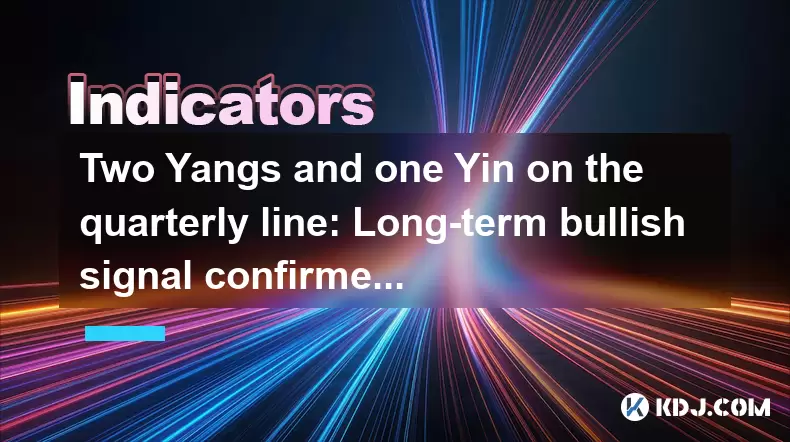
Two Yangs and one Yin on the quarterly line: Long-term bullish signal confirmed?
Jun 12,2025 at 07:00am
Understanding the 'Two Yangs and One Yin' Candlestick PatternIn technical analysis, candlestick patterns play a pivotal role in identifying potential market reversals or continuations. The 'Two Yangs and One Yin' pattern is one such formation that traders often observe on longer timeframes like the quarterly chart. This pattern consists of two bullish (...
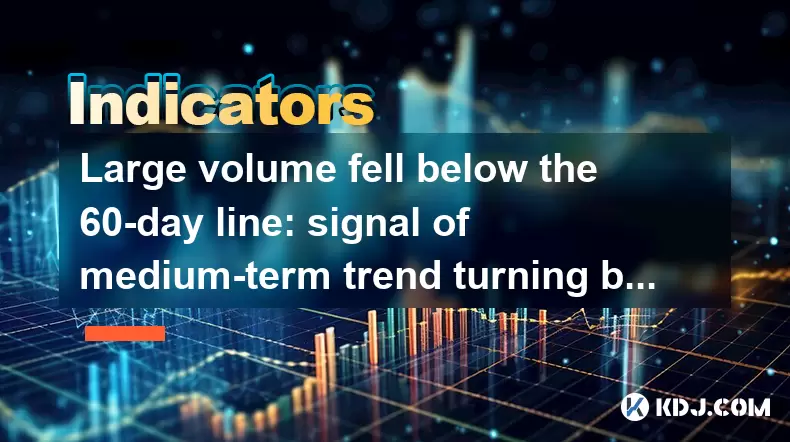
Large volume fell below the 60-day line: signal of medium-term trend turning bearish?
Jun 13,2025 at 03:42am
Understanding the 60-Day Moving Average in CryptocurrencyIn cryptocurrency trading, technical analysis plays a crucial role in predicting price movements. One of the most commonly used indicators is the 60-day moving average (MA), which smooths out price data over the last 60 days to provide traders with insights into the medium-term trend. When large v...
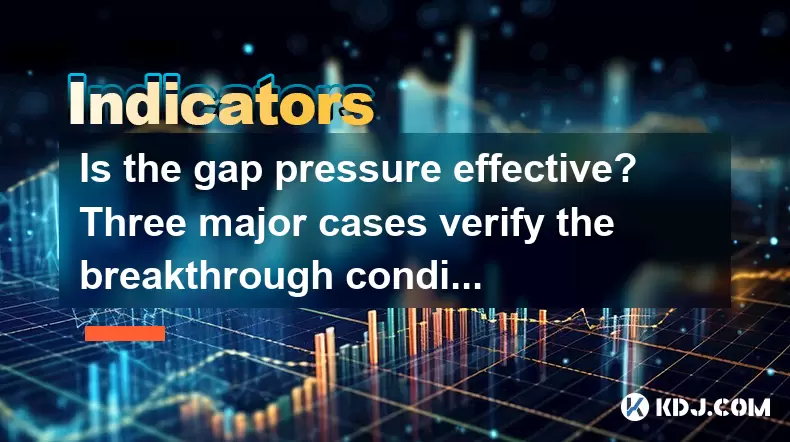
Is the gap pressure effective? Three major cases verify the breakthrough conditions
Jun 13,2025 at 04:35am
Understanding the Gap Pressure in Cryptocurrency TradingIn cryptocurrency trading, gap pressure refers to a technical analysis concept where price gaps form due to sudden market movements. These gaps often occur between the closing price of one trading session and the opening price of the next. Traders pay close attention to these gaps because they can ...
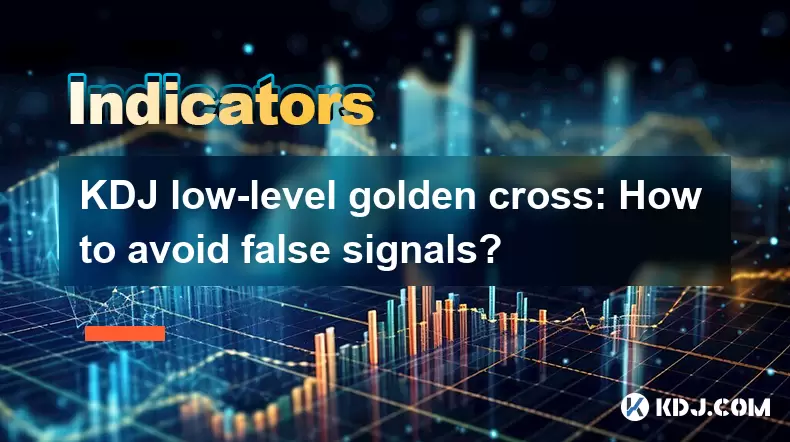
KDJ low-level golden cross: How to avoid false signals?
Jun 12,2025 at 08:21am
Understanding the KDJ IndicatorThe KDJ indicator, also known as the stochastic oscillator, is a momentum-based technical analysis tool widely used in cryptocurrency trading. It consists of three lines: the %K line (fast stochastic), the %D line (slow stochastic), and the %J line (divergence value). These lines oscillate between 0 and 100, helping trader...

Bottom-up volume stagnation: Is it accumulation or heavy selling pressure?
Jun 12,2025 at 01:42pm
What Is Bottom-Up Volume Stagnation?Bottom-up volume stagnation refers to a specific pattern observed in cryptocurrency trading charts where the price of an asset moves sideways or slightly downward, and trading volume remains consistently low over an extended period. This phenomenon is often seen after a sharp price drop or during a prolonged bear mark...
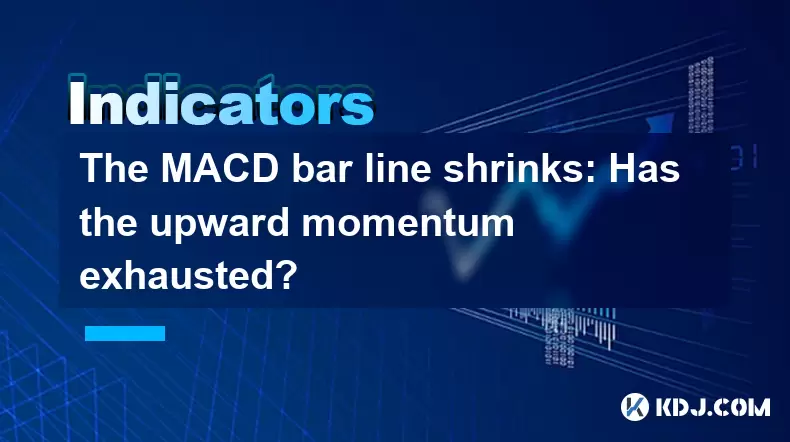
The MACD bar line shrinks: Has the upward momentum exhausted?
Jun 12,2025 at 12:49am
Understanding the MACD Bar LineThe Moving Average Convergence Divergence (MACD) is a widely used technical indicator in cryptocurrency trading. It consists of three main components: the MACD line, the signal line, and the MACD histogram (also known as the bar line). The MACD bar line represents the difference between the MACD line and the signal line. W...

Two Yangs and one Yin on the quarterly line: Long-term bullish signal confirmed?
Jun 12,2025 at 07:00am
Understanding the 'Two Yangs and One Yin' Candlestick PatternIn technical analysis, candlestick patterns play a pivotal role in identifying potential market reversals or continuations. The 'Two Yangs and One Yin' pattern is one such formation that traders often observe on longer timeframes like the quarterly chart. This pattern consists of two bullish (...

Large volume fell below the 60-day line: signal of medium-term trend turning bearish?
Jun 13,2025 at 03:42am
Understanding the 60-Day Moving Average in CryptocurrencyIn cryptocurrency trading, technical analysis plays a crucial role in predicting price movements. One of the most commonly used indicators is the 60-day moving average (MA), which smooths out price data over the last 60 days to provide traders with insights into the medium-term trend. When large v...

Is the gap pressure effective? Three major cases verify the breakthrough conditions
Jun 13,2025 at 04:35am
Understanding the Gap Pressure in Cryptocurrency TradingIn cryptocurrency trading, gap pressure refers to a technical analysis concept where price gaps form due to sudden market movements. These gaps often occur between the closing price of one trading session and the opening price of the next. Traders pay close attention to these gaps because they can ...

KDJ low-level golden cross: How to avoid false signals?
Jun 12,2025 at 08:21am
Understanding the KDJ IndicatorThe KDJ indicator, also known as the stochastic oscillator, is a momentum-based technical analysis tool widely used in cryptocurrency trading. It consists of three lines: the %K line (fast stochastic), the %D line (slow stochastic), and the %J line (divergence value). These lines oscillate between 0 and 100, helping trader...

Bottom-up volume stagnation: Is it accumulation or heavy selling pressure?
Jun 12,2025 at 01:42pm
What Is Bottom-Up Volume Stagnation?Bottom-up volume stagnation refers to a specific pattern observed in cryptocurrency trading charts where the price of an asset moves sideways or slightly downward, and trading volume remains consistently low over an extended period. This phenomenon is often seen after a sharp price drop or during a prolonged bear mark...

The MACD bar line shrinks: Has the upward momentum exhausted?
Jun 12,2025 at 12:49am
Understanding the MACD Bar LineThe Moving Average Convergence Divergence (MACD) is a widely used technical indicator in cryptocurrency trading. It consists of three main components: the MACD line, the signal line, and the MACD histogram (also known as the bar line). The MACD bar line represents the difference between the MACD line and the signal line. W...
See all articles

























































































